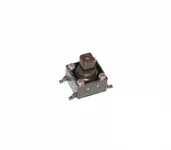dogooder
Well-known member
I have my Ensoniq ZR76 apart and need to replace switches. I bought ten. I don't see how to remove or replace them. The leads do not come through the boards.
I don't see how you would unsolder them and replace them. The only solution I see is to clip the leads at the front of the board and solder the new ones to them. I will include a picture of the switch, if anyone knows could you clue me in? They are listed as Pushbutton tact switch, surface mount, 7.3mm height.
Thank You.
I don't see how you would unsolder them and replace them. The only solution I see is to clip the leads at the front of the board and solder the new ones to them. I will include a picture of the switch, if anyone knows could you clue me in? They are listed as Pushbutton tact switch, surface mount, 7.3mm height.
Thank You.




